


The following
outline is provided as an overview of and topical guide to
Austria
Austria, formally the Republic of Austria, is a landlocked country in Central Europe, lying in the Eastern Alps. It is a federation of nine Federal states of Austria, states, of which the capital Vienna is the List of largest cities in Aust ...
:
Austria –
landlocked
A landlocked country is a country that has no territory connected to an ocean or whose coastlines lie solely on endorheic basins. Currently, there are 44 landlocked countries, two of them doubly landlocked (Liechtenstein and Uzbekistan), and t ...
sovereign country
A sovereign state is a state that has the highest authority over a territory. It is commonly understood that a sovereign state is independent. When referring to a specific polity, the term "country" may also refer to a constituent country, or a ...
located in
Central Europe
Central Europe is a geographical region of Europe between Eastern Europe, Eastern, Southern Europe, Southern, Western Europe, Western and Northern Europe, Northern Europe. Central Europe is known for its cultural diversity; however, countries in ...
.
It borders both
Germany
Germany, officially the Federal Republic of Germany, is a country in Central Europe. It lies between the Baltic Sea and the North Sea to the north and the Alps to the south. Its sixteen States of Germany, constituent states have a total popu ...
and the
Czech Republic
The Czech Republic, also known as Czechia, and historically known as Bohemia, is a landlocked country in Central Europe. The country is bordered by Austria to the south, Germany to the west, Poland to the northeast, and Slovakia to the south ...
to the north,
Slovakia
Slovakia, officially the Slovak Republic, is a landlocked country in Central Europe. It is bordered by Poland to the north, Ukraine to the east, Hungary to the south, Austria to the west, and the Czech Republic to the northwest. Slovakia's m ...
and
Hungary
Hungary is a landlocked country in Central Europe. Spanning much of the Pannonian Basin, Carpathian Basin, it is bordered by Slovakia to the north, Ukraine to the northeast, Romania to the east and southeast, Serbia to the south, Croatia and ...
to the east,
Slovenia
Slovenia, officially the Republic of Slovenia, is a country in Central Europe. It borders Italy to the west, Austria to the north, Hungary to the northeast, Croatia to the south and southeast, and a short (46.6 km) coastline within the Adriati ...
and
Italy
Italy, officially the Italian Republic, is a country in Southern Europe, Southern and Western Europe, Western Europe. It consists of Italian Peninsula, a peninsula that extends into the Mediterranean Sea, with the Alps on its northern land b ...
to the south, and
Switzerland
Switzerland, officially the Swiss Confederation, is a landlocked country located in west-central Europe. It is bordered by Italy to the south, France to the west, Germany to the north, and Austria and Liechtenstein to the east. Switzerland ...
and
Liechtenstein
Liechtenstein (, ; ; ), officially the Principality of Liechtenstein ( ), is a Landlocked country#Doubly landlocked, doubly landlocked Swiss Standard German, German-speaking microstate in the Central European Alps, between Austria in the east ...
to the west. The
capital
Capital and its variations may refer to:
Common uses
* Capital city, a municipality of primary status
** Capital region, a metropolitan region containing the capital
** List of national capitals
* Capital letter, an upper-case letter
Econom ...
is the city of
Vienna
Vienna ( ; ; ) is the capital city, capital, List of largest cities in Austria, most populous city, and one of Federal states of Austria, nine federal states of Austria. It is Austria's primate city, with just over two million inhabitants. ...
on the
Danube River
The Danube ( ; see also other names) is the second-longest river in Europe, after the Volga in Russia. It flows through Central and Southeastern Europe, from the Black Forest south into the Black Sea. A large and historically important riv ...
.
[CIA map 1]
General reference

* Pronunciation: or
* Common English country name:
Austria
Austria, formally the Republic of Austria, is a landlocked country in Central Europe, lying in the Eastern Alps. It is a federation of nine Federal states of Austria, states, of which the capital Vienna is the List of largest cities in Aust ...
* Official English country name: The
Republic of Austria
Austria, formally the Republic of Austria, is a landlocked country in Central Europe, lying in the Eastern Alps. It is a federation of nine Federal states of Austria, states, of which the capital Vienna is the List of largest cities in Aust ...
* Common
endonym
An endonym (also known as autonym ) is a common, name for a group of people, individual person, geographical place, language, or dialect, meaning that it is used inside a particular group or linguistic community to identify or designate them ...
(s):
* Official endonym(s):
*
Adjectival(s):
Austrian
*
Demonym
A demonym (; ) or 'gentilic' () is a word that identifies a group of people ( inhabitants, residents, natives) in relation to a particular place. Demonyms are usually derived from the name of the place ( hamlet, village, town, city, region, ...
(s):
*
Etymology
Etymology ( ) is the study of the origin and evolution of words—including their constituent units of sound and meaning—across time. In the 21st century a subfield within linguistics, etymology has become a more rigorously scientific study. ...
:
Name of Austria
*
ISO country codes: AT, AUT, 040
*
ISO region codes
ISO 3166-2 is part of the ISO 3166 standard published by the International Organization for Standardization (ISO), and defines codes for identifying the principal subdivisions (e.g., provinces or states) of all countries coded in ISO 3166-1. The of ...
: See
ISO 3166-2:AT
*
Internet
The Internet (or internet) is the Global network, global system of interconnected computer networks that uses the Internet protocol suite (TCP/IP) to communicate between networks and devices. It is a internetworking, network of networks ...
country code top-level domain
A country code top-level domain (ccTLD) is an Internet top-level domain generally used or reserved for a country, sovereign state, or dependent territory identified with a country code. All ASCII ccTLD identifiers are two letters long, and all tw ...
:
.at
.at is the Internet country code top-level domain (ccTLD) for Austria. It is administered by nic.at.
Second-level domains
The .at top-level domain has a number of second-level domains:
However, it is also possible to register directly at the to ...
Geography of Austria
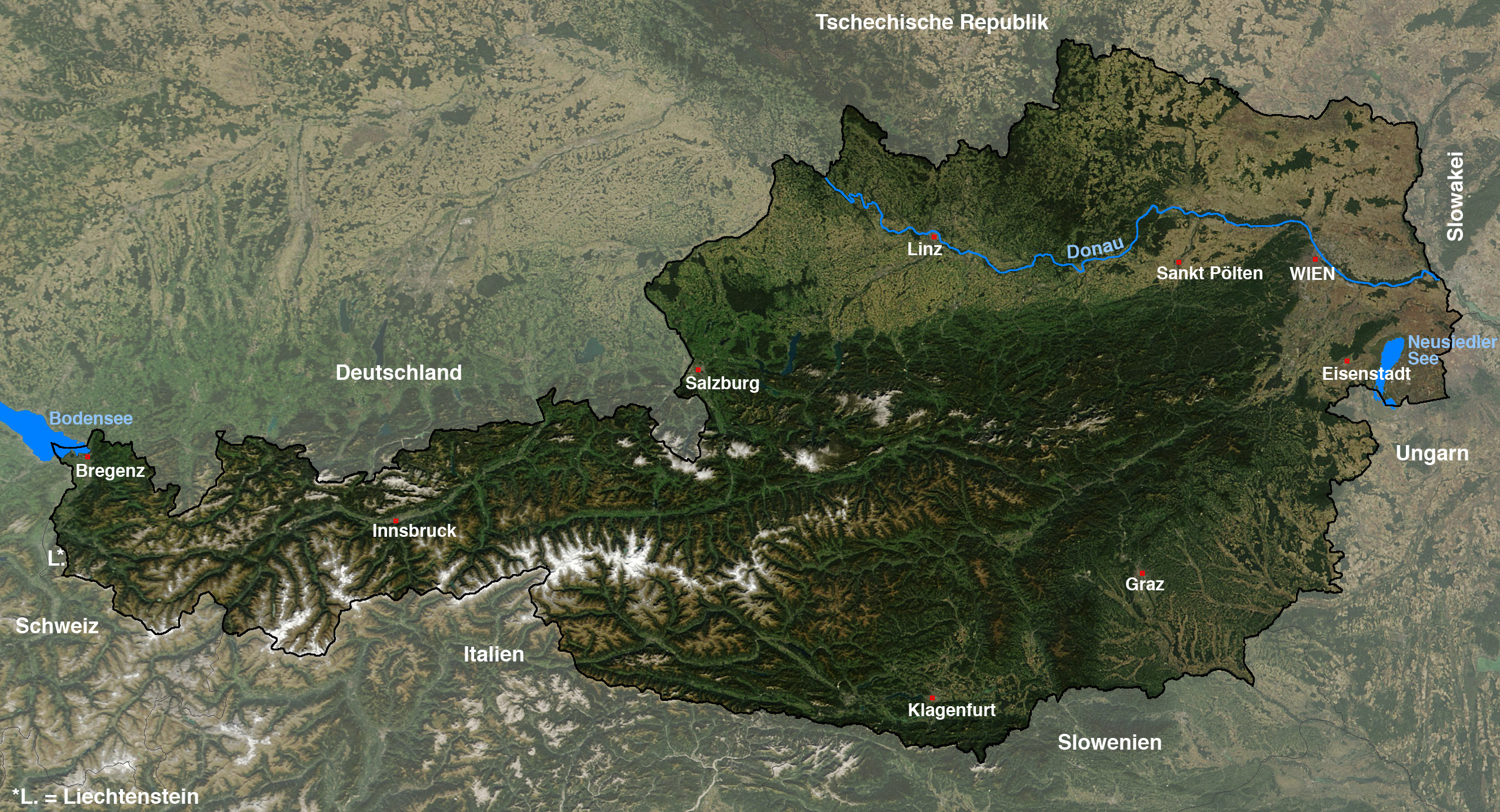 Geography of Austria
Geography of Austria
* Austria is a:
**
Country
A country is a distinct part of the world, such as a state, nation, or other political entity. When referring to a specific polity, the term "country" may refer to a sovereign state, state with limited recognition, constituent country, ...
***
Developed country
A developed country, or advanced country, is a sovereign state that has a high quality of life, developed economy, and advanced technological infrastructure relative to other less industrialized nations. Most commonly, the criteria for eval ...
***
Landlocked country
A landlocked country is a country that has no territory connected to an ocean or whose coastlines lie solely on endorheic basins. Currently, there are 44 landlocked countries, two of them doubly landlocked (Liechtenstein and Uzbekistan), and t ...
**
Sovereign state
A sovereign state is a State (polity), state that has the highest authority over a territory. It is commonly understood that Sovereignty#Sovereignty and independence, a sovereign state is independent. When referring to a specific polity, the ter ...
***
Member State of the European Union
The European Union (EU) is a political and economic union of Lists of member states of the European Union, 27 member states that are party to the EU's Treaties of the European Union, founding treaties, and thereby subject to the privileges and ...
* Location:
**
Northern Hemisphere
The Northern Hemisphere is the half of Earth that is north of the equator. For other planets in the Solar System, north is defined by humans as being in the same celestial sphere, celestial hemisphere relative to the invariable plane of the Solar ...
and
Eastern Hemisphere
The Eastern Hemisphere is the half of the planet Earth which is east of the prime meridian (which crosses Greenwich, London, United Kingdom) and west of the antimeridian (which crosses the Pacific Ocean and relatively little land from pole to p ...
**
Eurasia
Eurasia ( , ) is a continental area on Earth, comprising all of Europe and Asia. According to some geographers, Physical geography, physiographically, Eurasia is a single supercontinent. The concept of Europe and Asia as distinct continents d ...
***
Europe
Europe is a continent located entirely in the Northern Hemisphere and mostly in the Eastern Hemisphere. It is bordered by the Arctic Ocean to the north, the Atlantic Ocean to the west, the Mediterranean Sea to the south, and Asia to the east ...
****
Central Europe
Central Europe is a geographical region of Europe between Eastern Europe, Eastern, Southern Europe, Southern, Western Europe, Western and Northern Europe, Northern Europe. Central Europe is known for its cultural diversity; however, countries in ...
**
Time zone
A time zone is an area which observes a uniform standard time for legal, Commerce, commercial and social purposes. Time zones tend to follow the boundaries between Country, countries and their Administrative division, subdivisions instead of ...
:
Central European Time
Central European Time (CET) is a standard time of Central, and parts of Western Europe, which is one hour ahead of Coordinated Universal Time (UTC).
The UTC offset, time offset from UTC can be written as UTC+01:00.
It is used in most parts of Eur ...
(
UTC+01),
Central European Summer Time
Central European Summer Time (CEST, UTC+02:00), sometimes referred to as Central European Daylight Time (CEDT), is the standard clock time observed during the period of summer daylight-saving in those European countries which observe Central E ...
(
UTC+02
Coordinated Universal Time (UTC) is the primary time standard globally used to regulate clocks and time. It establishes a reference for the current time, forming the basis for civil time and time zones. UTC facilitates international communica ...
)
**
Extreme points of Austria
*** High:
Großglockner
*** Low:
Lake Neusiedl
Lake Neusiedl (, ; or ; ; ; ), or Fertő (), is the largest endorheic lake in Central Europe, straddling the Austrian– Hungarian border. The lake covers , of which is on the Austrian side and on the Hungarian side. The lake's drainage basi ...
Land boundaries: 2,562 km
:: 784 km
:: 430 km
:: 366 km
:: 362 km
:: 330 km
:: 164 km
:: 91 km
:: 35 km
:*Coastline: ''none''
*
Population of Austria: 8,316,487 people (2006
estimate
Estimation (or estimating) is the process of finding an estimate or approximation, which is a value that is usable for some purpose even if input data may be incomplete, uncertain, or unstable. The value is nonetheless usable because it is de ...
) -
97th most populous country
*
Area of Austria: 83,872 km
2 (32,383 mi
2) -
115th largest country
*
Atlas of Austria
Environment of Austria
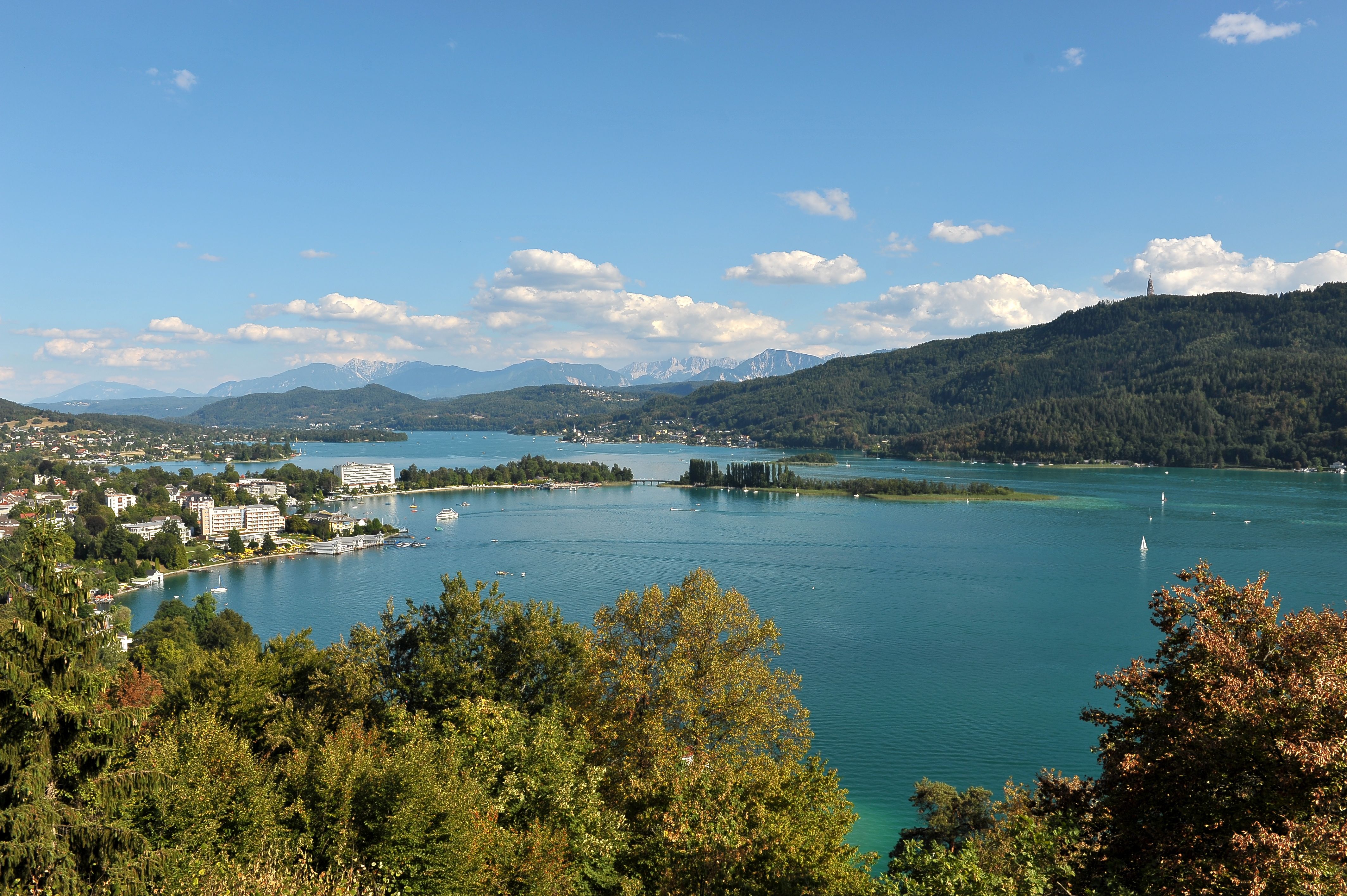 Environment of Austria
Environment of Austria
*
Climate of Austria
*
Environmental issues in Austria
*
Renewable energy in Austria
*
Geology of Austria
*
Protected areas of Austria
**
Biosphere reserves in Austria
**
National parks of Austria
*
Wildlife of Austria
**
Fauna of Austria
***
Birds of Austria
***
Mammals of Austria
Natural geographic features of Austria
*
Glaciers of Austria
*
Lakes of Austria
*
Mountains of Austria
**
Volcanoes in Austria
*
Rivers of Austria
This is a list of rivers (or tributary, tributaries thereof) at least partially located in Austria. Nearly all of Austria is drained by the Danube into the Black Sea; the rest flow into the North Sea. Rivers are listed twice, first by basin, then ...
**
Waterfalls of Austria
*
Valleys of Austria
*
List of World Heritage Sites in Austria
Neighbors of Austria

Austria is bordered by:
*
Germany
Germany, officially the Federal Republic of Germany, is a country in Central Europe. It lies between the Baltic Sea and the North Sea to the north and the Alps to the south. Its sixteen States of Germany, constituent states have a total popu ...
*
Czech Republic
The Czech Republic, also known as Czechia, and historically known as Bohemia, is a landlocked country in Central Europe. The country is bordered by Austria to the south, Germany to the west, Poland to the northeast, and Slovakia to the south ...
*
Slovakia
Slovakia, officially the Slovak Republic, is a landlocked country in Central Europe. It is bordered by Poland to the north, Ukraine to the east, Hungary to the south, Austria to the west, and the Czech Republic to the northwest. Slovakia's m ...
*
Hungary
Hungary is a landlocked country in Central Europe. Spanning much of the Pannonian Basin, Carpathian Basin, it is bordered by Slovakia to the north, Ukraine to the northeast, Romania to the east and southeast, Serbia to the south, Croatia and ...
*
Slovenia
Slovenia, officially the Republic of Slovenia, is a country in Central Europe. It borders Italy to the west, Austria to the north, Hungary to the northeast, Croatia to the south and southeast, and a short (46.6 km) coastline within the Adriati ...
*
Italy
Italy, officially the Italian Republic, is a country in Southern Europe, Southern and Western Europe, Western Europe. It consists of Italian Peninsula, a peninsula that extends into the Mediterranean Sea, with the Alps on its northern land b ...
*
Liechtenstein
Liechtenstein (, ; ; ), officially the Principality of Liechtenstein ( ), is a Landlocked country#Doubly landlocked, doubly landlocked Swiss Standard German, German-speaking microstate in the Central European Alps, between Austria in the east ...
*
Switzerland
Switzerland, officially the Swiss Confederation, is a landlocked country located in west-central Europe. It is bordered by Italy to the south, France to the west, Germany to the north, and Austria and Liechtenstein to the east. Switzerland ...
Regions of Austria
Administrative divisions of Austria
Administrative divisions of Austria
*
States of Austria
Austria is a federal republic consisting of nine federal states. The European Commission calls them provinces. Austrian federal states can pass laws that stay within the limits of the constitution, and each federal state has representatives in ...
**
Districts of Austria
A district ( ; Grammatical number#Overview, pl. ) is a second-level division of the executive (government), executive arm of the Austrian government. District offices are the primary point of contact between residents and the state for mos ...
***
Municipalities of Austria
**
Statutory cities (Statutarstädte)
= States of Austria
=
States of Austria
Austria is a federal republic consisting of nine federal states. The European Commission calls them provinces. Austrian federal states can pass laws that stay within the limits of the constitution, and each federal state has representatives in ...

*
Burgenland
Burgenland (; ; ; Bavarian language, Austro-Bavarian: ''Burgnland''; Slovene language, Slovene: ''Gradiščanska''; ) is the easternmost and least populous Bundesland (Austria), state of Austria. It consists of two statutory city (Austria), statut ...
*
Carinthia
Carinthia ( ; ; ) is the southernmost and least densely populated States of Austria, Austrian state, in the Eastern Alps, and is noted for its mountains and lakes. The Lake Wolayer is a mountain lake on the Carinthian side of the Carnic Main ...
*
Lower Austria
Lower Austria ( , , abbreviated LA or NÖ) is one of the nine states of Austria, located in the northeastern corner of the country. Major cities are Amstetten, Lower Austria, Amstetten, Krems an der Donau, Wiener Neustadt and Sankt Pölten, which ...
*
Upper Austria
Upper Austria ( ; ; ) is one of the nine States of Austria, states of Austria. Its capital is Linz. Upper Austria borders Germany and the Czech Republic, as well as the other Austrian states of Lower Austria, Styria, and Salzburg (state), Salzbur ...
*
Salzburg
Salzburg is the List of cities and towns in Austria, fourth-largest city in Austria. In 2020 its population was 156,852. The city lies on the Salzach, Salzach River, near the border with Germany and at the foot of the Austrian Alps, Alps moun ...
*
Styria
Styria ( ; ; ; ) is an Austrian Federal states of Austria, state in the southeast of the country. With an area of approximately , Styria is Austria's second largest state, after Lower Austria. It is bordered to the south by Slovenia, and cloc ...
*
Tyrol
Tyrol ( ; historically the Tyrole; ; ) is a historical region in the Alps of Northern Italy and western Austria. The area was historically the core of the County of Tyrol, part of the Holy Roman Empire, Austrian Empire and Austria-Hungary, f ...
*
Vorarlberg
Vorarlberg ( ; ; , , or ) is the westernmost States of Austria, state () of Austria. It has the second-smallest geographical area after Vienna and, although it also has the second-smallest population, it is the state with the second-highest popu ...
*
Vienna
Vienna ( ; ; ) is the capital city, capital, List of largest cities in Austria, most populous city, and one of Federal states of Austria, nine federal states of Austria. It is Austria's primate city, with just over two million inhabitants. ...
= Districts of Austria
=
Districts of Austria
A district ( ; Grammatical number#Overview, pl. ) is a second-level division of the executive (government), executive arm of the Austrian government. District offices are the primary point of contact between residents and the state for mos ...
The districts of Austria, listed by state:
Districts of Burgenland
Districts of Burgenland
Districts of Carinthia
Districts of Carinthia
Districts of Lower Austria
Districts of Lower Austria
Districts of Upper Austria
Districts of Upper Austria
Districts of Salzburg
Districts of Salzburg
Salzburg (, ; , also known as ''Salzburgerland''; ) is an Austrian federal state. In German it is called a , a German-to-English dictionary translates that to ''federal state'' and the European Commission calls it a ''province''. In German, its o ...
Districts of Styria
Districts of Styria
Districts of Tyrol
Districts of Tyrol
Districts of Vorarlberg
Districts of Vorarlberg
Districts of Vienna
Districts of Vienna
The districts of Vienna ( German: ''Wiener Gemeindebezirke'') are the 23 named city sections of Vienna, Austria, which are numbered for easy reference. They were created from 1850 onwards, when the city area was enlarged by the inclusion of surrou ...
= Municipalities of Austria
=
 Municipalities of Austria
Municipalities of Austria
*
Cities and towns of Austria
**
Capital
Capital and its variations may refer to:
Common uses
* Capital city, a municipality of primary status
** Capital region, a metropolitan region containing the capital
** List of national capitals
* Capital letter, an upper-case letter
Econom ...
of Austria:
Vienna
Vienna ( ; ; ) is the capital city, capital, List of largest cities in Austria, most populous city, and one of Federal states of Austria, nine federal states of Austria. It is Austria's primate city, with just over two million inhabitants. ...
(
outline)
Demography of Austria
Demographics of Austria
Demography, Demographic features of the population of Austria include population density, Ethnic group, ethnicity, education level, health of the populace, economic status, Religion in Austria, religious affiliations and other aspects of th ...
Government and politics of Austria
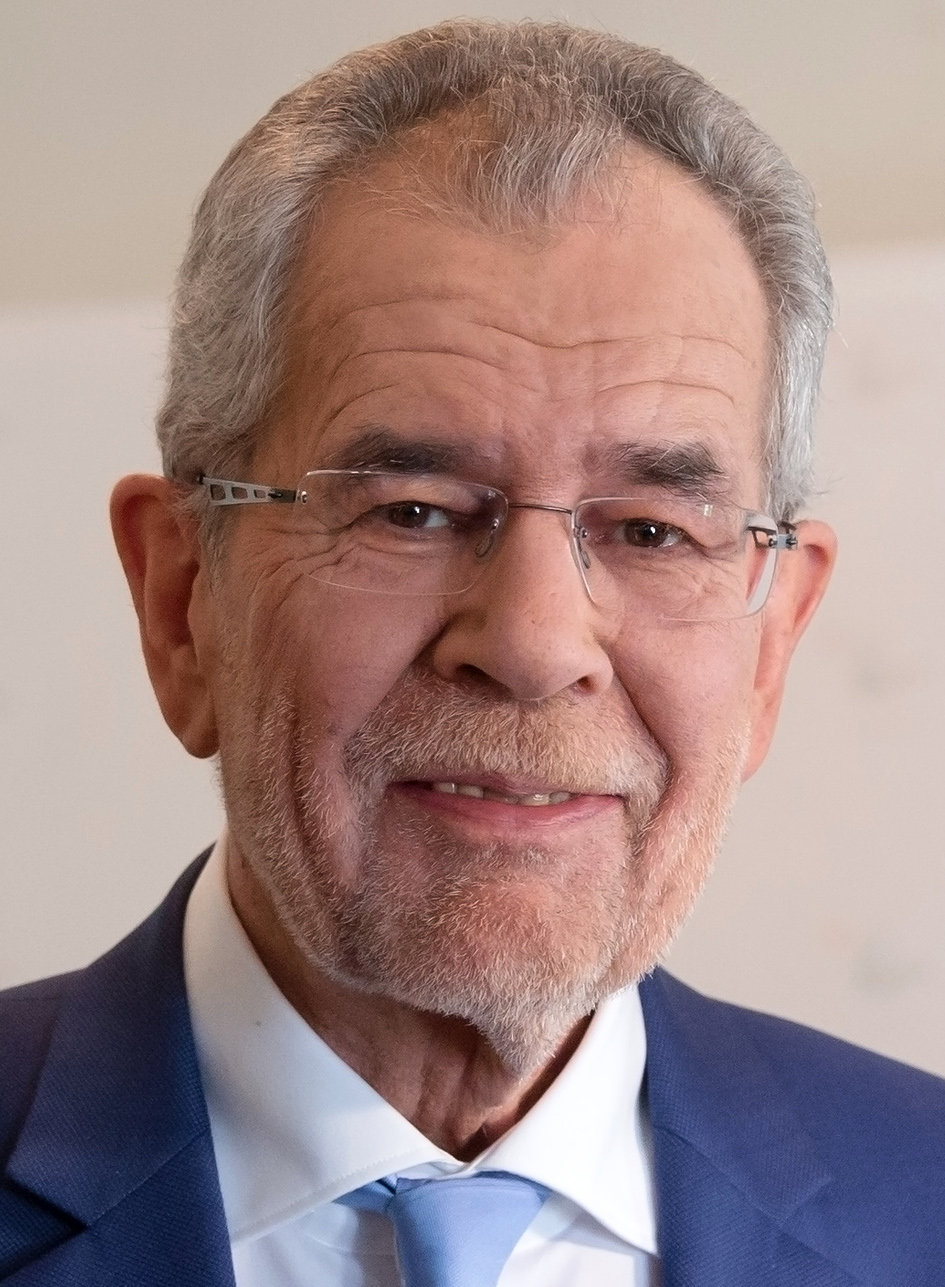

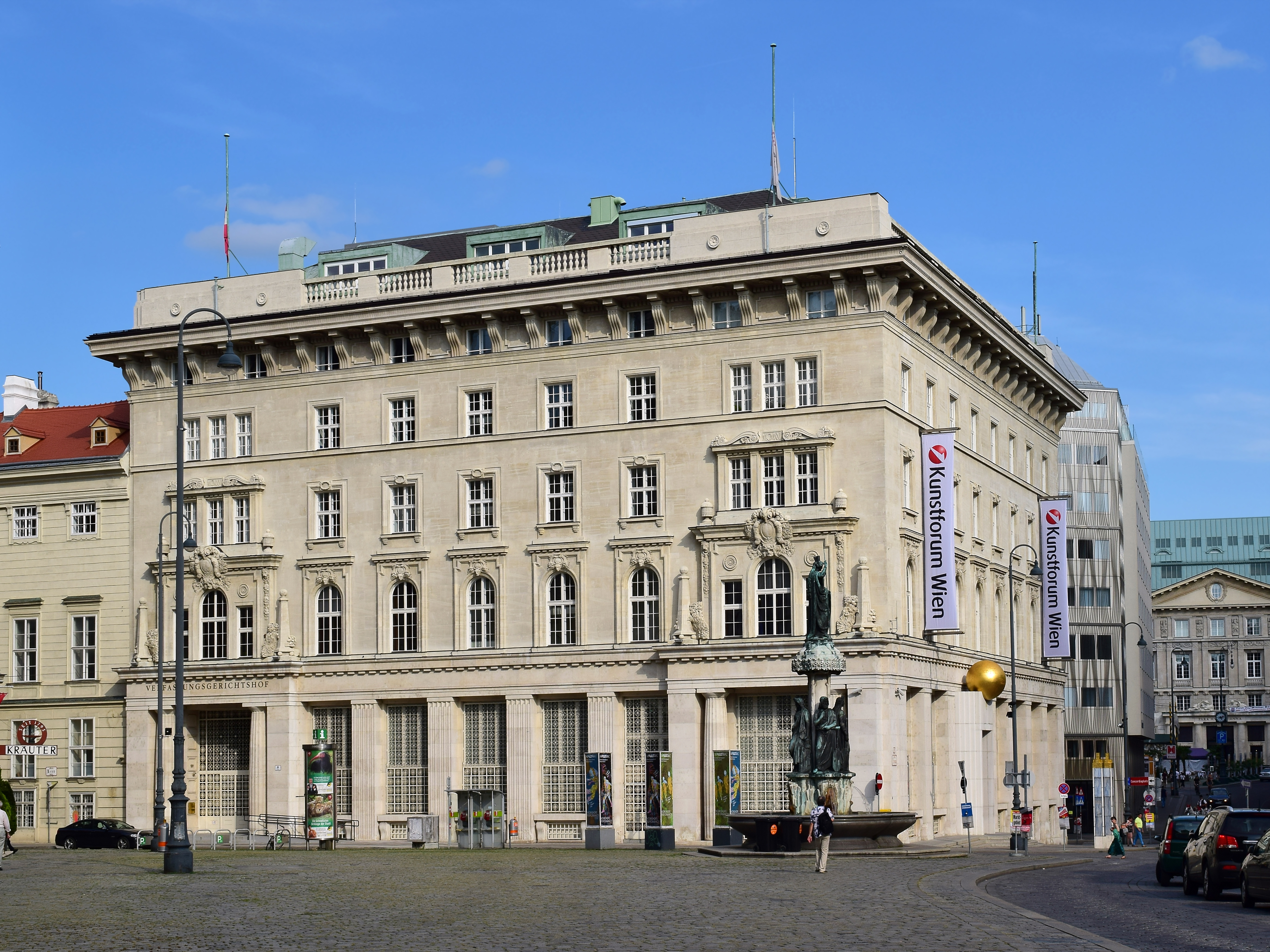
Politics of Austria
Politics in Austria reflects the dynamics of competition among multiple political parties, which led to the formation of a Conservative-Green coalition government for the first time in January 2020, following the snap elections of 29 Septemb ...
*
Form of government
A government is the system or group of people governing an organized community, generally a state.
In the case of its broad associative definition, government normally consists of legislature, executive, and judiciary. Government is a m ...
:
federal parliamentary
In modern politics and history, a parliament is a legislative body of government. Generally, a modern parliament has three functions: Representation (politics), representing the Election#Suffrage, electorate, making laws, and overseeing ...
representative democratic republic
A republic, based on the Latin phrase ''res publica'' ('public affair' or 'people's affair'), is a State (polity), state in which Power (social and political), political power rests with the public (people), typically through their Representat ...
*
Capital
Capital and its variations may refer to:
Common uses
* Capital city, a municipality of primary status
** Capital region, a metropolitan region containing the capital
** List of national capitals
* Capital letter, an upper-case letter
Econom ...
of Austria:
Vienna
Vienna ( ; ; ) is the capital city, capital, List of largest cities in Austria, most populous city, and one of Federal states of Austria, nine federal states of Austria. It is Austria's primate city, with just over two million inhabitants. ...
*
Elections in Austria
On the federal level, there are two main elections in Austria: presidential elections and elections to determine the composition of the National Council (''Nationalrat''), the lower house of Austria's bicameral Parliament. The upper house, the ...
*
Political parties in Austria
This article lists political parties in Austria. Austria has a multi-party system. Of the over 1,100 registered political parties, only few are known to the larger public. Since the 1980s, four parties have consistently received enough votes to g ...
*
Taxation in Austria
Branches of the government of Austria
Government of Austria
Executive branch of the government of Austria
Austrian Federal Government
The Government of Austria () is the executive cabinet of the Republic of Austria. It consists of the chancellor, who is the head of government, the vice chancellor and the ministers.
Appointment
Since the 1929 reform of the Austrian C ...
*
Head of state
A head of state is the public persona of a sovereign state.#Foakes, Foakes, pp. 110–11 "he head of state
He or HE may refer to:
Language
* He (letter), the fifth letter of the Semitic abjads
* He (pronoun), a pronoun in Modern English
* He (kana), one of the Japanese kana (へ in hiragana and ヘ in katakana)
* Ge (Cyrillic), a Cyrillic letter cal ...
being an embodiment of the State itself or representative of its international persona." The name given to the office of head of sta ...
:
President of Austria
The president of Austria () is the head of state of the Austria, Republic of Austria.
The office of the president was established in 1920 by the Constituent National Assembly (Austria), Constituent National Assembly of the First Austrian Repu ...
,
Alexander Van der Bellen
Alexander "Sascha" Van der Bellen (; born 18 January 1944), also referred to by the abbreviation VdB, is an Austrian politician serving as the president of Austria since 2017. He previously served as a professor of economics at the University ...
.
*
Head of government
In the Executive (government), executive branch, the head of government is the highest or the second-highest official of a sovereign state, a federated state, or a self-governing colony, autonomous region, or other government who often presid ...
:
Chancellor of Austria
The chancellor of Austria, officially the federal chancellor of the Republic of Austria (), is the head of government of the Austria, Republic of Austria.
List of chancellors of Austria, Twenty-nine people have served as chancellor. The curre ...
,
Sebastian Kurz.
**
Vice-Chancellor of Austria
The vice-chancellor of Austria is a member of the Government of Austria and is the deputy to the Chancellor. It is functionally equivalent to a deputy prime minister in other countries with parliamentary systems.
The current vice-chancellor ...
*
Cabinet of Austria
The Government of Austria () is the executive cabinet of the Republic of Austria. It consists of the chancellor, who is the head of government, the vice chancellor and the ministers.
Appointment
Since the 1929 reform of the Austrian C ...
Legislative branch of the government of Austria
*
Parliament of Austria
The Austrian Parliament () is the bicameral federal legislature of Austria. It consists of two chambers – the National Council and the Federal Council. In specific cases, both houses convene as the Federal Assembly. The legislature meets i ...
(
bicameral
Bicameralism is a type of legislature that is divided into two separate Deliberative assembly, assemblies, chambers, or houses, known as a bicameral legislature. Bicameralism is distinguished from unicameralism, in which all members deliberate ...
)
**
Upper house
An upper house is one of two Legislative chamber, chambers of a bicameralism, bicameral legislature, the other chamber being the lower house. The house formally designated as the upper house is usually smaller and often has more restricted p ...
:
National Council of Austria
The National Council (, ) is one of the two houses of the Austrian Parliament and is frequently referred to as the lower house. The constitution endows the National Council with far more power than the Federal Council.
Responsibilities
The Nat ...
(''Nationalrat'')
**
Lower house
A lower house is the lower chamber of a bicameral legislature, where the other chamber is the upper house. Although styled as "below" the upper house, in many legislatures worldwide, the lower house has come to wield more power or otherwise e ...
:
Federal Council of Austria
The Federal Council (, ) is the upper house of the Austrian Parliament, representing the nine States of Austria at the federal level. As part of a bicameral legislature alongside the National Council, it can be compared with an upper house or ...
(''Bundesrat'')
Judicial branch of the government of Austria
Courts in Austria
*
Constitutional Court of Austria
The Constitutional Court ( or ) in Austria is the tribunal responsible for judicial review.
It verifies the constitutionality of statutes, the legality of ordinances and other secondary legislation, and the constitutionality of decisions of ...
*
Administrative Court of Austria
*
Criminal court system of Austria
*
Civil court system of Austria
Foreign relations of Austria
Foreign relations of Austria
The 1955 Austrian State Treaty ended the four-power occupation and recognized Austria as an independent and sovereign state. In October 1955, the Federal Assembly passed a constitutional law in which "Austria declares of her own free will her pe ...
*
Diplomatic missions in Austria
*
Diplomatic missions of Austria
International organization membership
International organization membership of Austria
The Republic of Austria is a member of:
[
* African Development Bank Group (AfDB) (nonregional member)
*]Asian Development Bank
The Asian Development Bank (ADB) is a regional development bank to promote social and economic development in Asia. The bank is headquartered in Metro Manila, Philippines and maintains 31 field offices around the world.
The bank was establishe ...
(ADB) (nonregional member)
*Australia Group
The Australia Group is a multilateral export control regime (MECR) and an informal group of countries (now joined by the European Commission) established in 1985 (after the use of chemical weapons by Iraq in 1984) to help member countries to i ...
*Bank for International Settlements
The Bank for International Settlements (BIS) is an international financial institution which is owned by member central banks. Its primary goal is to foster international monetary and financial cooperation while serving as a bank for central bank ...
(BIS)
* Black Sea Economic Cooperation Zone (BSEC) (observer)
* Central European Initiative (CEI)
* Confederation of European Paper Industries (CEPI)
*Council of Europe
The Council of Europe (CoE; , CdE) is an international organisation with the goal of upholding human rights, democracy and the Law in Europe, rule of law in Europe. Founded in 1949, it is Europe's oldest intergovernmental organisation, represe ...
(CE)
* Economic and Monetary Union (EMU)
*Euro-Atlantic Partnership Council
The Euro-Atlantic Partnership Council (EAPC) is a post–Cold War, North Atlantic Treaty Organization (NATO) institution. The EAPC is a multilateral forum created to improve relations between NATO and non-NATO countries in Europe and Central Asi ...
(EAPC)
*European Bank for Reconstruction and Development
The European Bank for Reconstruction and Development, shortened to EBRD ( French: ''Banque européenne pour la reconstruction et le développement'' or ''BERD''), is an international financial institution founded in 1991 in Paris. As a multilat ...
(EBRD)
*European Investment Bank
The European Investment Bank (EIB) is the European Union's investment bank and is owned by the 27 member states. It is the largest multilateral financial institution in the world. The EIB finances and invests both through equity and debt sol ...
(EIB)
*European Organization for Nuclear Research
European, or Europeans, may refer to:
In general
* ''European'', an adjective referring to something of, from, or related to Europe
** Ethnic groups in Europe
** Demographics of Europe
** European cuisine, the cuisines of Europe and other We ...
(CERN)
*European Space Agency
The European Space Agency (ESA) is a 23-member International organization, international organization devoted to space exploration. With its headquarters in Paris and a staff of around 2,547 people globally as of 2023, ESA was founded in 1975 ...
(ESA)
*European Union
The European Union (EU) is a supranational union, supranational political union, political and economic union of Member state of the European Union, member states that are Geography of the European Union, located primarily in Europe. The u ...
(EU)
*Food and Agriculture Organization
The Food and Agriculture Organization of the United Nations; . (FAO) is a specialized agency of the United Nations that leads international efforts to defeat hunger and improve nutrition and food security. Its Latin motto, , translates ...
(FAO)
* Group of 9 (G9)
*Inter-American Development Bank
The Inter-American Development Bank (IDB or IADB) is an international development finance institution headquartered in Washington, D.C., United States of America. It serves as one of the leading sources of development financing for the countri ...
(IADB)
*International Atomic Energy Agency
The International Atomic Energy Agency (IAEA) is an intergovernmental organization that seeks to promote the peaceful use of nuclear technology, nuclear energy and to inhibit its use for any military purpose, including nuclear weapons. It was ...
(IAEA)
*International Bank for Reconstruction and Development
The International Bank for Reconstruction and Development (IBRD) is an international financial institution, established in 1944 and headquartered in Washington, D.C., United States; it is the lending arm of World Bank Group. The IBRD offers lo ...
(IBRD)
*International Chamber of Commerce
The International Chamber of Commerce (ICC; French: ''Chambre de commerce internationale'') is the largest, most representative business organization in the world. ICC represents over 45 million businesses in over 170 countries who have interest ...
(ICC)
*International Civil Aviation Organization
The International Civil Aviation Organization (ICAO ) is a specialized agency of the United Nations that coordinates the principles and techniques of international air navigation, and fosters the planning and development of international sch ...
(ICAO)
*International Criminal Court
The International Criminal Court (ICC) is an intergovernmental organization and International court, international tribunal seated in The Hague, Netherlands. It is the first and only permanent international court with jurisdiction to prosecute ...
(ICCt)
* International Criminal Police Organization (Interpol)
*International Development Association
The International Development Association (IDA) () is a development finance institution which offers concessional loans and grant (money), grants to the world's poorest developing country, developing countries. The IDA is a member of the World ...
(IDA)
*International Energy Agency
The International Energy Agency (IEA) is a Paris-based autonomous intergovernmental organization, established in 1974, that provides policy recommendations, analysis and data on the global energy sector. The 31 member countries and 13 associatio ...
(IEA)
* (IFRCS)
*International Finance Corporation
The International Finance Corporation (IFC) is an international financial institution headquartered in Washington, D.C. and a member of the World Bank Group that offers investment, advisory, and asset-management services to encourage private ...
(IFC)
*International Fund for Agricultural Development
The International Fund for Agricultural Development (IFAD) is an international financial institution and a specialised agency of the United Nations that works to address poverty and hunger in rural areas of developing countries. It is the on ...
(IFAD)
*International Labour Organization
The International Labour Organization (ILO) is a United Nations agency whose mandate is to advance social and economic justice by setting international labour standards. Founded in October 1919 under the League of Nations, it is one of the firs ...
(ILO)
*International Maritime Organization
The International Maritime Organization (IMO; ; ) is a List of specialized agencies of the United Nations, specialized agency of the United Nations responsible for regulating maritime transport. The IMO was established following agreement at a ...
(IMO)
*International Monetary Fund
The International Monetary Fund (IMF) is a major financial agency of the United Nations, and an international financial institution funded by 191 member countries, with headquarters in Washington, D.C. It is regarded as the global lender of las ...
(IMF)
*International Olympic Committee
The International Olympic Committee (IOC; , CIO) is the international, non-governmental, sports governing body of the modern Olympic Games. Founded in 1894 by Pierre de Coubertin and Demetrios Vikelas, it is based i ...
(IOC)
*International Organization for Migration (IOM)
*International Organization for Standardization (ISO)
*International Red Cross and Red Crescent Movement (ICRM)
*International Telecommunication Union (ITU)
*International Telecommunications Satellite Organization (ITSO)
*International Trade Union Confederation (ITUC)
*Inter-Parliamentary Union (IPU)
*Multilateral Investment Guarantee Agency (MIGA)
*Nonaligned Movement (NAM) (guest)
*Nuclear Energy Agency (NEA)
*Nuclear Suppliers Group (NSG)
*''Organisation internationale de la Francophonie'' (OIF) (observer)
*Organisation for Economic Co-operation and Development (OECD)
*Organization for Security and Cooperation in Europe (OSCE)
*Organisation for the Prohibition of Chemical Weapons (OPCW)
*Organization of American States (OAS) (observer)
*Paris Club
*Partnership for Peace (PFP)
*Permanent Court of Arbitration (PCA)
*Schengen Convention
*Southeast European Cooperative Initiative (SECI) (observer)
*United Nations (UN)
*United Nations Conference on Trade and Development (UNCTAD)
*United Nations Educational, Scientific, and Cultural Organization (UNESCO)
*United Nations High Commissioner for Refugees (UNHCR)
*United Nations Industrial Development Organization (UNIDO)
*United Nations Mission for the Referendum in Western Sahara (MINURSO)
*United Nations Observer Mission in Georgia (UNOMIG)
*United Nations Peacekeeping Force in Cyprus (UNFICYP)
*United Nations Truce Supervision Organization (UNTSO)
*Universal Postal Union (UPU)
*Western European Union (WEU) (observer)
*World Confederation of Labour (WCL)
*World Customs Organization (WCO)
*World Federation of Trade Unions (WFTU)
*World Health Organization (WHO)
*World Intellectual Property Organization (WIPO)
*World Meteorological Organization (WMO)
*World Tourism Organization (UNWTO)
*World Trade Organization (WTO)
*World Veterans Federation
*Zangger Committee (ZC)
Law and order in Austria
Law of Austria
* Animal rights in Austria
**Animal welfare and rights in Austria
* Capital punishment in Austria
* Constitution of Austria
**Federal Constitutional Law (Austrian act)
* Crime in Austria
**Corruption in Austria
**Human trafficking in Austria
* Human rights in Austria
**Abortion in Austria
**LGBT rights in Austria
**Freedom of religion in Austria
* Law enforcement in Austria
**Federal Police (Austria)
**Financial Guard (Austria)
**Gendarmerie (Austria)
**Municipal police (Austria)
Military of Austria
 Military of Austria
* Command
** Commander-in-chief:
Military of Austria
* Command
** Commander-in-chief: President of Austria
The president of Austria () is the head of state of the Austria, Republic of Austria.
The office of the president was established in 1920 by the Constituent National Assembly (Austria), Constituent National Assembly of the First Austrian Repu ...
, Heinz Fischer
*** Ministry of Defence (Austria), Ministry of Defence of Austria
* Forces
** Austrian Federal Army, Army of Austria
** Navy of Austria: None
** Air Force of Austria
** Special forces of Austria
* Military history of Austria
* Military ranks of Austria
Local government in Austria
Local government in Austria
* Government of Burgenland
* Government of Carinthia (state), Government of Carinthia
* Government of Lower Austria
* Government of Upper Austria
* Government of Salzburg (state), Government of Salzburg
* Government of Styria (state), Government of Styria
* Government of Tyrol (state), Government of Tyrol
* Government of Vorarlberg
* Government of Vienna
History of Austria
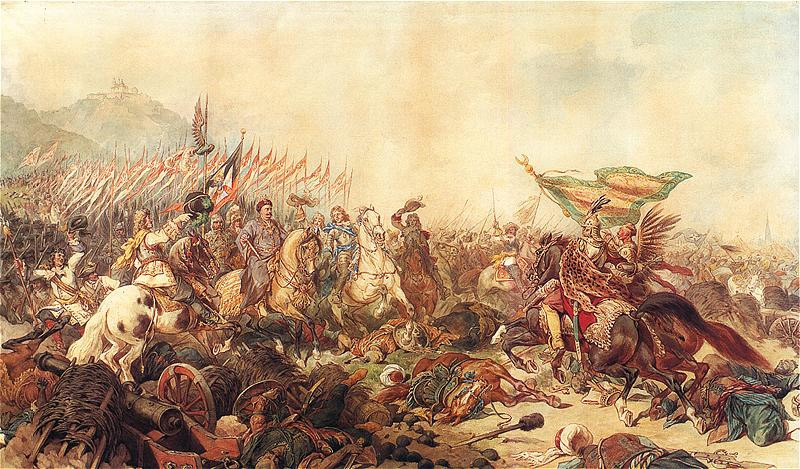
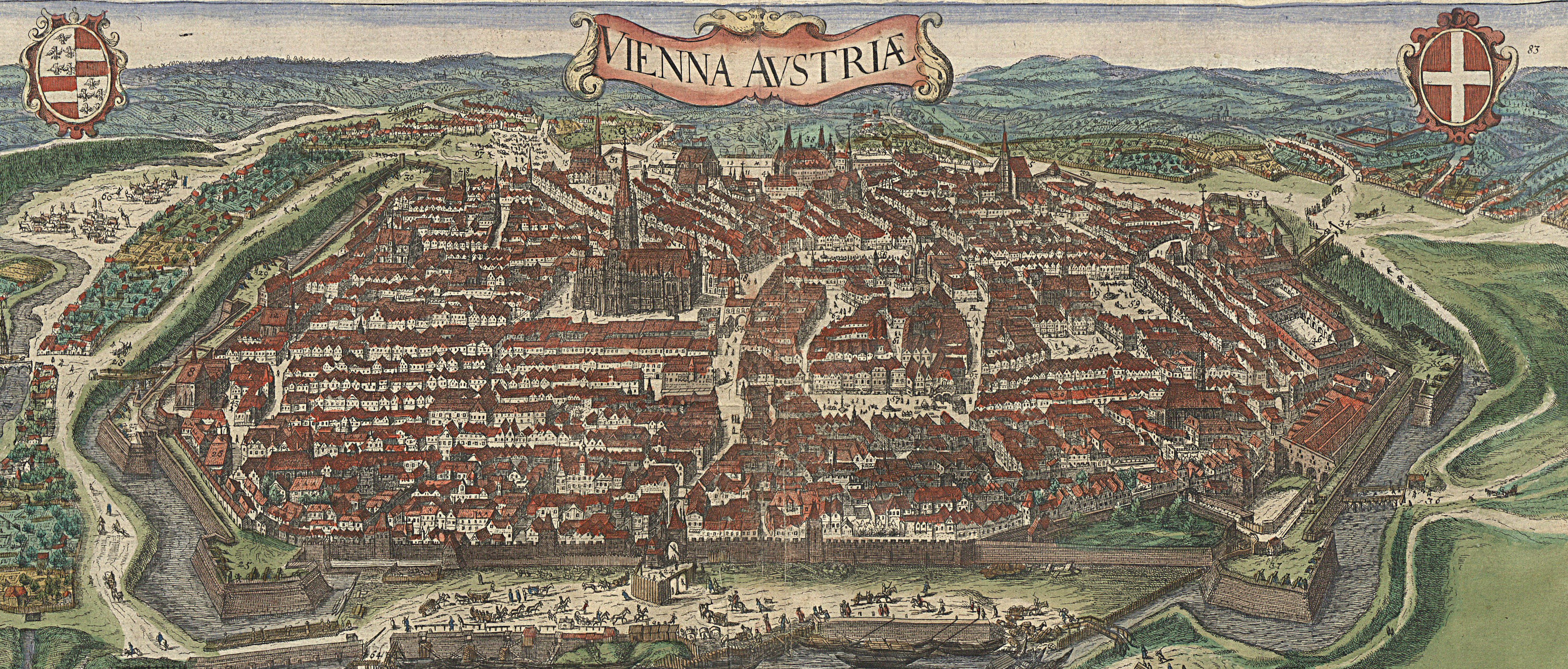 History of Austria
* Timeline of Austrian history
* Portal:Current events/Austria, Current events of Austria
* Military history of Austria
* List of rulers of Austria, Rulers of Austria
History of Austria
* Timeline of Austrian history
* Portal:Current events/Austria, Current events of Austria
* Military history of Austria
* List of rulers of Austria, Rulers of Austria
By state
* History of Burgenland
* History of Carinthia (state), History of Carinthia
* History of Lower Austria
* History of Upper Austria
* History of Salzburg (state), History of Salzburg
* History of Styria (state), History of Styria
* History of Tyrol (state), History of Tyrol
* History of Vorarlberg
* History of Vienna
Culture of Austria
Culture of Austria
* Architecture of Austria
**List of Austrian artists and architects, Austrian architects
* Austrophile
* Cuisine of Austria
**Austrian wine
**Beer in Austria
* Festivals in Austria
* Austrian folk dance, Folk dance
* Languages of Austria
**Minority languages of Austria
* Media in Austria
**List of newspapers in Austria, Newspapers
**Radio in Austria
**Television in Austria
* National symbols of Austria
**Coat of arms of Austria
**Flag of Austria
**National anthem of Austria
**Honours system in the Republic of Austria, Honours system of Austria
* People of Austria
**List of Austrians
* Prostitution in Austria
* Public holidays in Austria
* List of records of Austria, Records of Austria
* Religion in Austria
**Buddhism in Austria
**Christianity in Austria
**Hinduism in Austria
**Islam in Austria
**Judaism in Austria
**Sikhism in Austria
* List of World Heritage Sites in Europe#Austria, World Heritage Sites in Austria
Art in Austria
* Art in Austria
**List of painters from Austria, Austrian painters
* Cinema of Austria
* Literature of Austria
* Music of Austria
**Music of Innsbruck
**Music of Vienna
**List of Austrian composers, Austrian composers
* Theatre in Austria
Sports in Austria
 Sport in Austria
* Sport in Austria#Basketball, Basketball in Austria
**Austria national basketball team
* Football in Austria
**Austria national football team
* Austria at the Olympics
* Sport in Austria#Motorsport, Motorsport in Austria
* Sport in Austria#Winter sports, Winter sports in Austria
Sport in Austria
* Sport in Austria#Basketball, Basketball in Austria
**Austria national basketball team
* Football in Austria
**Austria national football team
* Austria at the Olympics
* Sport in Austria#Motorsport, Motorsport in Austria
* Sport in Austria#Winter sports, Winter sports in Austria
Economy and infrastructure of Austria
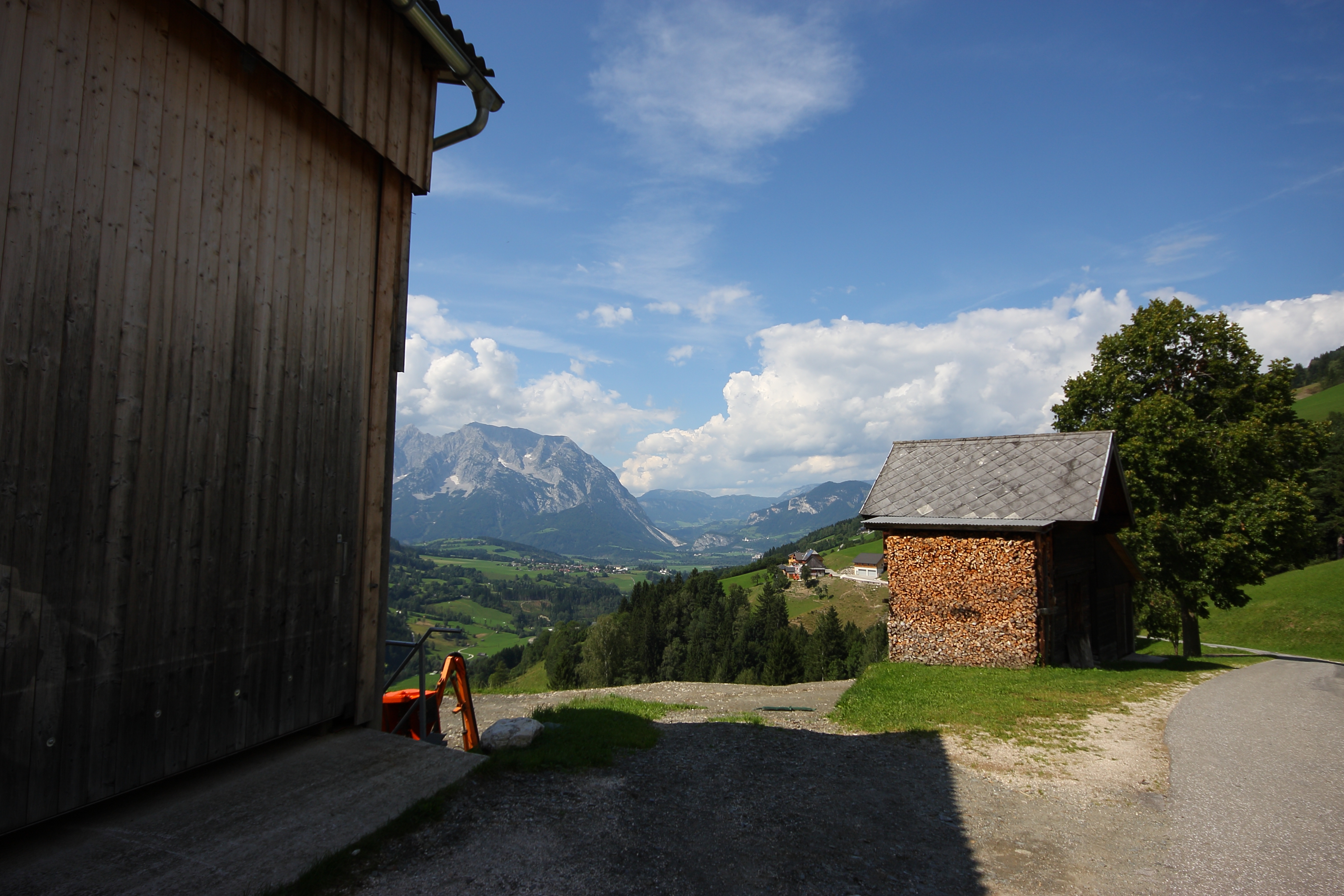
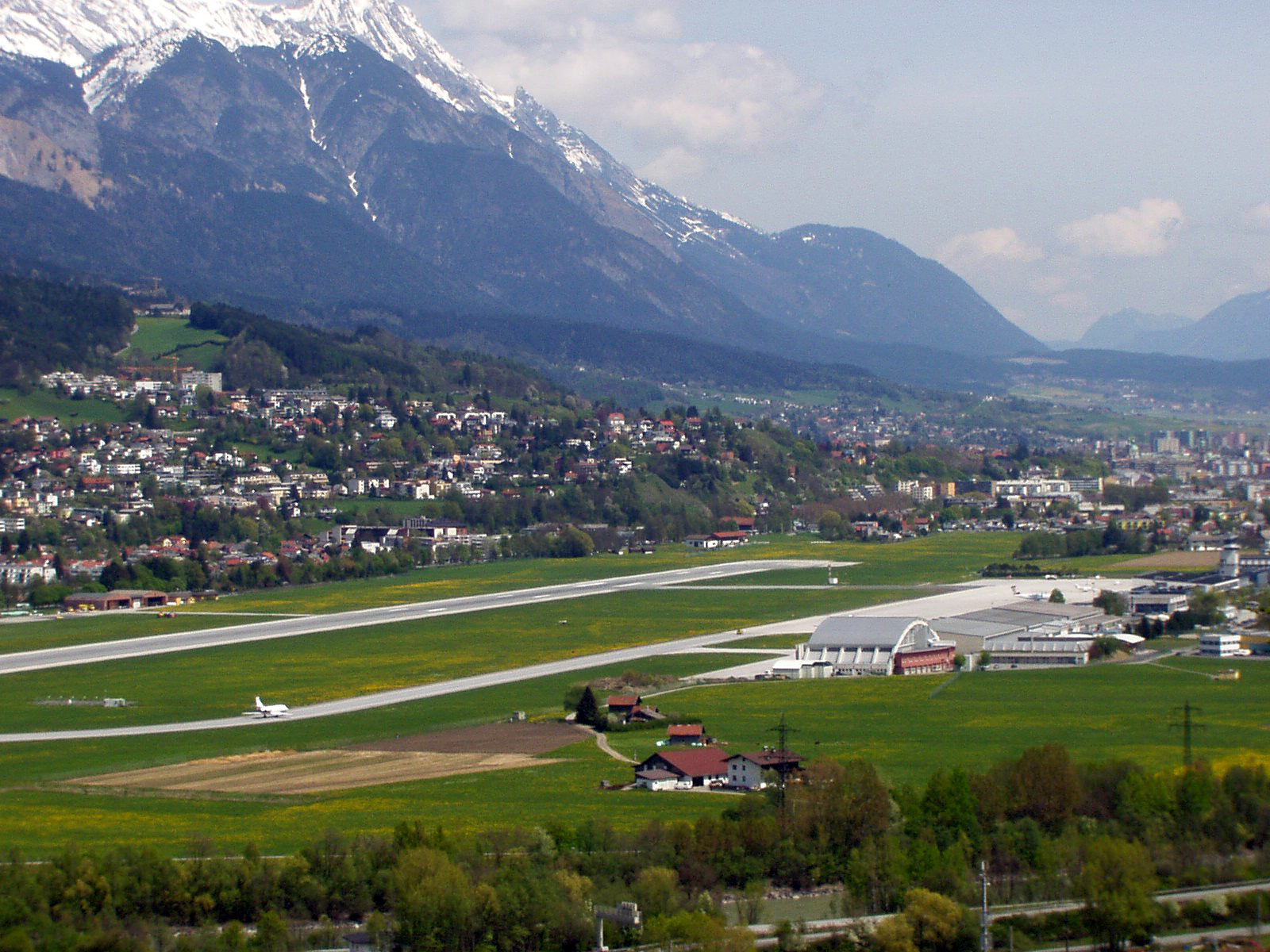 Economy of Austria
* List of countries by GDP (nominal), Economic rank, by nominal GDP (2007): 26th (twenty-sixth)
* Agriculture in Austria
* Banking in Austria
**Oesterreichische Nationalbank
**Wiener Börse
* Communications in Austria
**Internet in Austria
* List of companies of Austria, Companies of Austria
* Currency, Currency of Austria: Euro (see also: Template:Euro topics, Euro topics)
**Former currency: Austrian schilling
**ISO 4217: Euro, EUR
* Energy in Austria
**Energy policy of Austria
**Wind power in Austria
* Health care in Austria
* Mining in Austria
* Tourism in Austria
**Visa policy of the Schengen Area
* Transport in Austria
**List of airports in Austria, Airports in Austria
**Rail transport in Austria
**Autobahns of Austria, Roads in Austria
***Road signs in Austria
**List of town tramway systems in Austria, Town tramway systems in Austria
Economy of Austria
* List of countries by GDP (nominal), Economic rank, by nominal GDP (2007): 26th (twenty-sixth)
* Agriculture in Austria
* Banking in Austria
**Oesterreichische Nationalbank
**Wiener Börse
* Communications in Austria
**Internet in Austria
* List of companies of Austria, Companies of Austria
* Currency, Currency of Austria: Euro (see also: Template:Euro topics, Euro topics)
**Former currency: Austrian schilling
**ISO 4217: Euro, EUR
* Energy in Austria
**Energy policy of Austria
**Wind power in Austria
* Health care in Austria
* Mining in Austria
* Tourism in Austria
**Visa policy of the Schengen Area
* Transport in Austria
**List of airports in Austria, Airports in Austria
**Rail transport in Austria
**Autobahns of Austria, Roads in Austria
***Road signs in Austria
**List of town tramway systems in Austria, Town tramway systems in Austria
Education in Austria
Education in Austria
* Academic grading in Austria
* List of schools in Austria, Schools in Austria
* List of universities in Austria, Universities in Austria
See also
*
*
*
*
*Index of Austria-related articles
*List of Austria-related topics
*List of international rankings
*Member state of the European Union
*Member state of the United Nations
*Outline of Europe
*Outline of geography
References
External links
''aeiou Encyclopedia'' homepage
Austria.info
Official homepage of the Austrian National Tourist Office
History of Austria: Primary Documents
Federal Chancellery of Austria
Information on Austrian Law
Austria
''The World Factbook''. Central Intelligence Agency.
Library of Congress
Portals on the World - Austria
Facts and Information (updated February 2005)
World Intellectual Property Handbook: Austria
Austria News
News from Austria in English language
; Photos
Europe Pictures - AustriaPhotos of Vienna city, the capital of Austria
{{DEFAULTSORT:Austria
Outlines of countries, Austria
Austria,
Austria-related lists,
Outlines
 The following outline is provided as an overview of and topical guide to
The following outline is provided as an overview of and topical guide to  * Pronunciation: or
* Common English country name:
* Pronunciation: or
* Common English country name:  Geography of Austria
* Austria is a:
**
Geography of Austria
* Austria is a:
**  Environment of Austria
* Climate of Austria
* Environmental issues in Austria
* Renewable energy in Austria
* Geology of Austria
* Protected areas of Austria
** Biosphere reserves in Austria
** National parks of Austria
* Wildlife of Austria
** Fauna of Austria
*** Birds of Austria
*** Mammals of Austria
Environment of Austria
* Climate of Austria
* Environmental issues in Austria
* Renewable energy in Austria
* Geology of Austria
* Protected areas of Austria
** Biosphere reserves in Austria
** National parks of Austria
* Wildlife of Austria
** Fauna of Austria
*** Birds of Austria
*** Mammals of Austria
 Austria is bordered by:
*
Austria is bordered by:
* 


 Military of Austria
* Command
** Commander-in-chief:
Military of Austria
* Command
** Commander-in-chief: 
 History of Austria
* Timeline of Austrian history
* Portal:Current events/Austria, Current events of Austria
* Military history of Austria
* List of rulers of Austria, Rulers of Austria
History of Austria
* Timeline of Austrian history
* Portal:Current events/Austria, Current events of Austria
* Military history of Austria
* List of rulers of Austria, Rulers of Austria
 Sport in Austria
* Sport in Austria#Basketball, Basketball in Austria
**Austria national basketball team
* Football in Austria
**Austria national football team
* Austria at the Olympics
* Sport in Austria#Motorsport, Motorsport in Austria
* Sport in Austria#Winter sports, Winter sports in Austria
Sport in Austria
* Sport in Austria#Basketball, Basketball in Austria
**Austria national basketball team
* Football in Austria
**Austria national football team
* Austria at the Olympics
* Sport in Austria#Motorsport, Motorsport in Austria
* Sport in Austria#Winter sports, Winter sports in Austria
 Economy of Austria
* List of countries by GDP (nominal), Economic rank, by nominal GDP (2007): 26th (twenty-sixth)
* Agriculture in Austria
* Banking in Austria
**Oesterreichische Nationalbank
**Wiener Börse
* Communications in Austria
**Internet in Austria
* List of companies of Austria, Companies of Austria
* Currency, Currency of Austria: Euro (see also: Template:Euro topics, Euro topics)
**Former currency: Austrian schilling
**ISO 4217: Euro, EUR
* Energy in Austria
**Energy policy of Austria
**Wind power in Austria
* Health care in Austria
* Mining in Austria
* Tourism in Austria
**Visa policy of the Schengen Area
* Transport in Austria
**List of airports in Austria, Airports in Austria
**Rail transport in Austria
**Autobahns of Austria, Roads in Austria
***Road signs in Austria
**List of town tramway systems in Austria, Town tramway systems in Austria
Economy of Austria
* List of countries by GDP (nominal), Economic rank, by nominal GDP (2007): 26th (twenty-sixth)
* Agriculture in Austria
* Banking in Austria
**Oesterreichische Nationalbank
**Wiener Börse
* Communications in Austria
**Internet in Austria
* List of companies of Austria, Companies of Austria
* Currency, Currency of Austria: Euro (see also: Template:Euro topics, Euro topics)
**Former currency: Austrian schilling
**ISO 4217: Euro, EUR
* Energy in Austria
**Energy policy of Austria
**Wind power in Austria
* Health care in Austria
* Mining in Austria
* Tourism in Austria
**Visa policy of the Schengen Area
* Transport in Austria
**List of airports in Austria, Airports in Austria
**Rail transport in Austria
**Autobahns of Austria, Roads in Austria
***Road signs in Austria
**List of town tramway systems in Austria, Town tramway systems in Austria